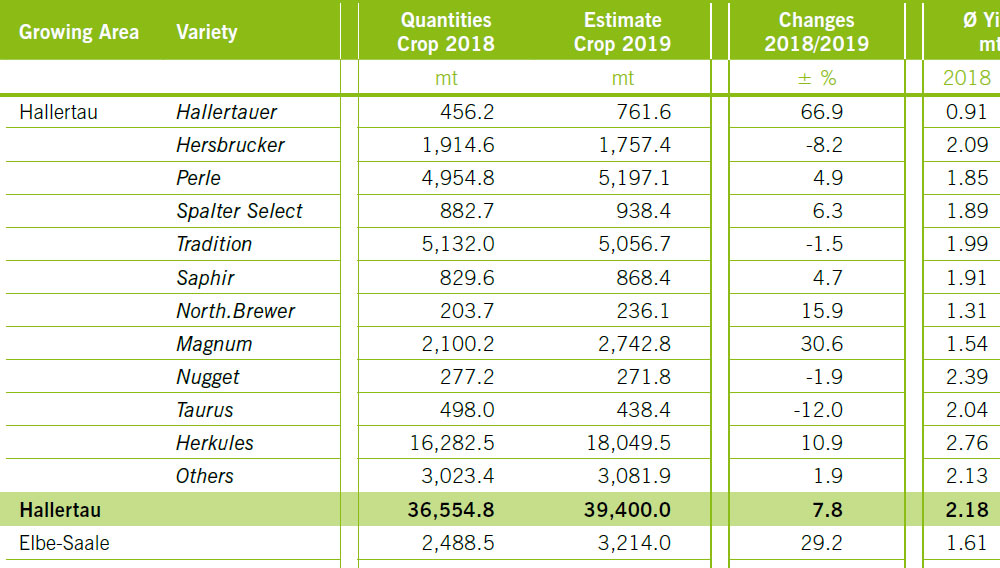Hopsteiner Newsletter 08/2019 | The aims of the Hopsteiner breeding program are two fold.
Hopsteiner Newsletter 07/2019 | Hopsteiner Germany has built a new cold store for baled leaf hops.
Hopsteiner Newsletter 06/2019 | The survey of hop acreage in 2019 is completed.
Hopsteiner Newsletter 05/2019 – The International Bitterness Units test, IBU, was developed in the 1960’s to measure the iso-alpha acid concentration in beer. The test is a simple liquid-liquid extraction where 10 ml of beer is extracted with 20 ml of acidified isooctane by shaking the two in a testtube for 15 minutes.
The 2018 Hopsteiner Guidelines are ready and will be available at BrauBeviale 2018 in Nuremberg.
A few years ago, craft brewers in the northeastern part of the United States started to brew a different kind of beer. One full of massive hop flavor yet not very bitter. The beers also taste fruity or juicy and are incredibly hazy. So what did they do?
The crop estimate for the Hallertau was announced on August 23rd, meaning that crop 2018 estimates have now been submitted for all German hop growing areas.
The survey of hop acreage in 2018 is completed.


